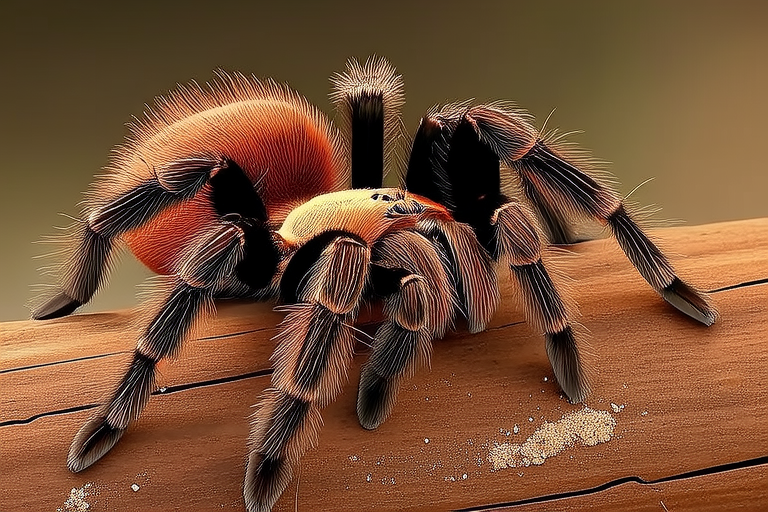Tarantulas 101: Debunking Myths and Embracing These Amazing Spiders
Welcome to Tarantulas 101, your comprehensive guide to understanding and appreciating one of nature’s most misunderstood creatures. Tarantulas, belonging to the family Theraphosidae, are a diverse group of spiders known for their large size and hairy appearance. With over 900 species spread across various continents, they have adapted to a wide range of habitats, from the arid deserts of North America to the lush rainforests of South America.
Diversity and Habitats
These spiders exhibit remarkable diversity in size, coloration, and behavior. Some species, like the Goliath birdeater (Theraphosa blondi), can grow to be as large as a dinner plate, while others, such as the pink toe tarantula (Avicularia avicularia), are relatively smaller. Their habitats vary widely, with some species thriving in burrows underground, while others prefer to build webs in trees or crevices. Despite their intimidating appearance, tarantulas play crucial roles in their respective ecosystems, serving as both predators and prey.
Common Misconceptions
One of the most pervasive myths about tarantulas is that they are aggressive and dangerous to humans. In reality, tarantulas are generally shy and non-aggressive. They prefer to avoid confrontation and will only attack if provoked or threatened. Even then, their bites are rarely harmful to humans, causing symptoms similar to a bee sting at worst. The primary defense mechanism of many tarantulas is their hairs, which can cause irritation when rubbed against skin or eyes but are not particularly dangerous.
Diet, Lifespan, and Unique Characteristics
Tarantulas are carnivorous and feed primarily on insects, though larger species may consume small vertebrates like lizards, frogs, and even birds. They use their powerful fangs to inject venom into their prey, immobilizing it before consuming it. The lifespan of a tarantula can vary depending on the species, but generally, females live longer than males. In captivity, female tarantulas can live up to 30 years, while males typically reach the end of their life span within 10 years.
One of the most fascinating aspects of tarantulas is their unique physical characteristics. Their bodies are covered in fine, sensory hairs that help them detect vibrations and potential threats. Some species, like the Brazilian wandering spider, have been known to produce venom potent enough to affect human physiology, but most tarantulas’ venom is too weak to cause significant harm to humans. Their hairy legs and abdomens also serve as camouflage, helping them blend into their surroundings.
Caring for Tarantulas as Pets
If you’re considering keeping a tarantula as a pet, it’s essential to understand the specific needs of your chosen species. Housing a tarantula requires a secure enclosure that mimics its natural habitat. A glass terrarium with a tightly fitting lid is ideal, providing adequate ventilation and preventing escape. The substrate inside should be deep enough to allow burrowing, and it’s important to maintain the appropriate temperature and humidity levels for the particular species.
Feeding a pet tarantula involves offering live insects such as crickets, mealworms, or roaches. It’s crucial to ensure that the prey items are appropriately sized for the spider to avoid injury. Handling tarantulas should be done with caution and respect; these creatures are delicate and can become stressed easily. Always handle them gently and avoid disturbing them during molting periods.
Appreciation and Conclusion
By embracing tarantulas and learning more about their fascinating lives, we can foster a greater appreciation for these incredible creatures. Their role in maintaining ecological balance is invaluable, and they deserve our respect and admiration rather than fear. Whether you’re a seasoned enthusiast or a newcomer to the world of tarantulas, there’s always something new to discover about these amazing spiders.
Let us challenge ourselves to look beyond the stereotypes and embrace the beauty and complexity of tarantulas. By doing so, we contribute to a more informed and compassionate approach to wildlife conservation and appreciation. So, next time you encounter a tarantula, take a moment to marvel at its intricate design and consider the vital role it plays in our planet’s ecosystem.
